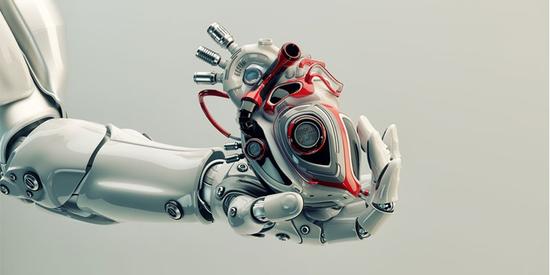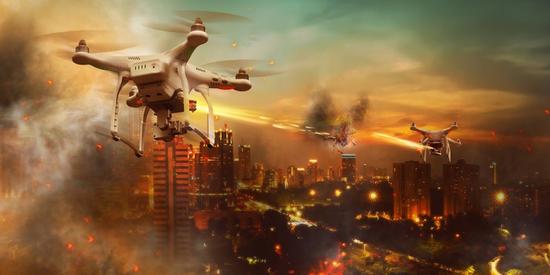AI's "arms race" has opened for the next 10,000 years

[December 20 news] Researchers, entrepreneurs and technology giants are taking artificial intelligence (AI) to the forefront and affecting the daily activities of health, education, and business. But, as described in the exciting new book “Life 3.0,†there is still greater, even philosophical, questions about the rise of machine intelligence and how it can redefine mankind.
What does the machine, software and network mean for the formation of wisdom, awareness and human conception? How will today's rules and ethical guidelines shape tomorrow's civilization? The book “Life 3.0,†written by Max Tegmark, discusses the human situation in the artificial intelligence era with dialogues and thought-provoking writing styles, and provides insights for the most important dialogue in our time.
The book has 365 pages and contains 8 chapters. The cited books include Nick Bostrom and Ray Kurzweil. This book is accompanied by an online interactive survey conducted on the AgeOfAi platform.
Author Max Tegmark is a professor of physics at the Massachusetts Institute of Technology. He has authored more than 200 technical papers on topics from cosmology to artificial intelligence. As chairman of the Future Life Institute, he collaborated with Elon Musk to launch the first personal worker smart security research grants program. Known as "Mad Max", his early work was "Our Mathematical Universe."
Evolution and wisdom
Tegmark defines three stages of life: life 1.0 (biological stage), natural evolution of the hardware and software of life forms, life 2.0 (cultural stage), hardware evolution, and most of the life form design software; life 3.0 (technology Phase), life forms design their own hardware and software.
Although human DNA information has not changed significantly in the past 50,000 years, humans (Life 2.0) have been liberated from the shackles of genetics and have a significant amount of information storage in the human brain, books, computers, and networks. increase. The next upgrade (Life 3.0) will be able to design our hardware: DNA, neural connections, collaborative matrix, etc. "Life 3.0" will be driven by artificial intelligence and will come in the next century or even in our lifetime.
Tegmark defines this stage by defining a series of terms: intelligence (ability to accomplish complex goals), machine learning (research and use of algorithms to improve experience), artificial intelligence (at least as much as humans can accomplish any cognitive task), super intelligence (intelligence far beyond the human level), beneficial artificial intelligence (powerful and guided by artificial intelligence research guidelines), awareness (subjective experience), awareness (subjective experience), and singularity (smart explosion).
Memory, numeracy, learning ability and intelligence are all independent. They do not depend on or reflect the underlying material basis. "Intelligence does not require meat, blood or carbon atoms," Tegmark explained. Human civilization evolved through language, tools, and complex interrelationships, and the next achievable invention is likely to be artificial intelligence. For humans, most "software" learning is done through synaptic growth -- but smart machines can take different paths because they don't have to constantly recreate, machines can improve machines faster than humans. Human DNA stores 1.6 gigabytes of information, which is equivalent to a downloaded movie (some bacteria store 40 kilobytes). The 100 billion neurons in the human brain store a lot of information. The information in the brain is remembered by association rather than address.
Robustness, law, war and employment
Speech recognition, translation, robotics, and games are some of the significant applications of artificial intelligence, but other influences include financial markets, robot-assisted manufacturing, smart grids, surgery, and self-driving cars.
Through better verification, validation, security, and control, artificial intelligence can help reduce human errors and enhance the robustness of the system.
Inspired by behavioral psychology, deep reinforcement learning provided the impetus for the breakthrough of DeepMind and OpenAI. DeepMind's AlphaGo has already won the world's top 20 go tournaments without losing a game. Deep learning in games is sometimes considered to create intuition (deciding something without explaining why) and creativity (unusual and successful progress).
Tegmark said: "The fruitful human-computer collaboration really looks promising in many areas." The next frontier of the research includes combining deep recursive neural networks with the semantic world model. He added: "It is increasingly difficult to argue that artificial intelligence completely lacks goals, breadth, intuition, creativity or language."

As we all know, the dark side of artificial intelligence lies in autonomous weapons. A killer UAV driven by artificial intelligence costs only as much as a smartphone. As a result, many artificial intelligence researchers and robotics experts called for the prohibition of certain types of autonomous weapons and prevented the "global artificial intelligence arms race."
"If we can figure out how to make robotic referees transparent and fair, artificial intelligence can make our legal system more fair and efficient," explains Tiger. The typical human error in the legal system is caused by prejudice, fatigue or lack of up-to-date knowledge. The legal classification, responsibilities and rights of robots need to be designed. Who should be responsible for an accident involving driverless cars: occupants, owners, manufacturers, or the car itself?
Tegmark believes that there is no doubt that the era of artificial intelligence leads will change employment, and the best careers will be those that involve people, unpredictability and creativity. Unfortunately, research shows that science and technology are more educational, and the owners of technology companies and a few "superstars" are good.
The government should formulate policies that promote research, education, and entrepreneurship, ensure basic income levels, and give people a sense of mission in work and life.
With the participation of artificial intelligence researchers, technology giants, and entrepreneurs, the future of “Life Research Institute†will become the mainstream of “artificial intelligence security†in this regard. It supports such principles as dialogue with policy makers, respect for privacy, shared interests, common interests, and human control. The goal is to improve human society before artificial intelligence takes off, to modernize technology before it becomes obsolete, and to allow young people to understand how to create powerful technology before giving them power.
aims
Human goals and motives have complex interactions such as survival, resource acquisition, curiosity, and compassion. Some people have given up early biological targets, such as copying. Intelligent behavior is associated with goal realization. Early artificial intelligence programs revolved around programming machines to achieve human goals. Target design involves sub-goals, ethics, learning and reinforcement.
But as artificial intelligence becomes more and more complex, we need to ask whether artificial intelligence should retain the goals we have already given. Should we make AI more extensive and broader goals? Whose goal is this? Can we change the goal of AI? What is the meaning of "meaning"? What are the goals of humanity in science, religion and philosophy? One day, will human goals be as frustrating as ants' goals?
awareness
Tegmark proposes a definition of conscious entities, ie those who are free to think, remember, calculate, learn, experience, communicate, and act without harming others. The authors stress that with the increasing complexity of artificial intelligence, we also need to realize that there is now an urgent deadline for our philosophical exploration of the meaning of consciousness.

Some thorny issues arise, such as understanding how unconscious behavior affects conscious activity? What is the difference between the physical properties between the conscious and unconscious systems? And why are things conscious? What does a self-driving car experience? Is artificial intelligence free? Will artificial intelligence be affected? Should AI have rights?
The study of human consciousness reflects the integration of brain theory, physics, and information science. "If artificial intelligence is possible, the space for artificial intelligence experience can be huge compared to human experience," explains Tegmark. Artificial intelligence may challenge the idea of ​​anthropocentrism (think human beings are the smartest species on earth and therefore unique and superior).
Artificial Intelligence Takes Off: Intelligence Explosion?
The principles of life evolution include collaboration, competition, and control, all of which are amplified by technology. If we one day create human-level artificial general intelligence (AGI), how quickly will it create an intellectual explosion? Can we control this? If not, how long will it take for us to control our world? In such a world, are we humans in a totalitarian environment or on a licensed stage?
The "Artificial Intelligence Breakthrough" chapter deals with such issues in the form of science fiction. Will AI be upset by the less wise man enslavement? What goals should humans create in artificial intelligence systems to prevent mutiny? Can artificial intelligence dominate the system and crack it? Will we live in a bipolar world (human and artificial intelligence)?
When will we reach this awkward intersection? When we do this, how much control can we exert on artificial intelligence and how much can artificial intelligence control? According to Tegmark, the real answer is not what will happen or what should happen. But what kind of future do we want?
Artificial Intelligence: The Next 10,000 Years
The next chapter of this book, "Super Intelligence," is even more incredible. It tells about the next 10,000 years of life. Do we want to be accepted? Do we want AI to stay awake? What kind of lifestyle do we want to create? What civilization do we want to spread throughout the universe?
In this regard, Tegmark described many scenarios, such as: Protecting God (the omniscience and ubiquitous artificial intelligence, maximizing human happiness), zookeeper (human beings in the artificial intelligence zoo), enslaved god (incarcerated AI), Conqueror (AI out of humanity) and Free Will Utopia (coexistence of humans and artificial intelligence). Each situation should be evaluated based on feasibility, strengths and weaknesses.
Will machines be grateful to humans for creating them? Does artificial intelligence respect humans? Should humans respect the semi-robots that incorporate the essence of life and the machine world? Can humans be uploaded, downloaded and cloned? Does artificial intelligence have more advanced emotions than humans? There is no consensus on these issues (many are not even aware of these issues), so Tegmark needs to discuss in depth the topic of AGI and humans.
The Universe: The World in the Next 1 Billion Years and Beyond
In this chapter of the great universe, things have become more unbelievable, especially after the end of life on earth (for various reasons, including the expansion of the sun and the boiling of all life forms on Earth). This chapter draws on the findings of cosmologist Freeman Dyson and builds on such concepts as dark energy, wormholes, Chandrasekhar limits, and Stephen Hawking's black hole power plant.

"Even if we travel at the speed of light, all galaxies over 17 billion light-years will never be reachable - these are more than 98% of the galaxies in our universe," Tegmark explained.
Because communication speed is so slow in such a vast universe, "universal artificial intelligence" needs to find a balance between speed and complexity and establish a hierarchical structure of computing networks. Such super intelligence will need to evolve a governance model for different levels of cooperation and control, and even create new types of substances. If the "our" super smart encounters another life form, will there be a conflict of weapons or ideas?
"If there is no science and technology, humanity will be extinct in the tens of billions of years of the future, and this will cause all the life in our universe to be a transient fleeting flash of beauty, making enthusiasm and meaning almost non-eternal meaningless. No one will experience it anymore,†Tegmark said.
“If we continue to improve our technology and avoid traps with enough care, vision, and plans, then life can flourish on the planet, even in the billions of years beyond the madest dreams of our ancestors. It thrived,†Tegmark wrote. (From: YourStory Compilation: NetEase See Sense Compilation Platform Review: nariiy)
Kadena (KDA) is a hybrid blockchain network and smart contract platform that aims to unite public applications, private blockchains, and other interoperable chains in one place, driving traffic to the high-bandwidth computer at the heart of the Kadena public chain. Kadena`s mining algorithm is Blake2S, which supports ASIC mining.
Kadena is a blockchain network and smart contract token aiming to bring together both public applications and private blockchain.
The coin solves various problems that prevent blockchain adoption on a bigger scale. The protocol enables businesses and developers to make transactions and share information across many networks.
The Coin is actually on the grid to reduce users` experience in the network. Ethereum users experience a lot of network congestion which results in high gas fees.
A few changes have come into Kadena mining. A proof of work blockchain uses PACT to create smart contracts in the hidden gen. Therefore you need to know the following before mining Kadena. PACT is an intelligent contract language serving the needs of the blockchain community.
1.You Need an Excellent Mining Hardware
To mine efficiently, you will require suitable mining hardware. Kadena uses ASIC miners. But, unfortunately for Kadena miners, CPUs and GPUs are not usable. Furthermore, ASIC mining receives support from the Blake2S algorithm.
2.Make Sure You Have a Kadena Wallet Address
You will need a Kadena wallet address to receive and monitor your profit. F2pool also makes the distribution of the revenues to every user daily at 2KDA. The Kadena node wallet is a perfect wallet where you can receive your mined KDA. all you need to do is install it, click receive, and have a new wallet address.
You will need to configure your Asic Miner to a mining pool server for your hashrate and profit to be recorded and monitored.
3.Start Mining
After all the setting is done, your miner will be ready to work. Make sure you enter your wallet address and click on the go button to receive your revenue.
Kda Miner,Antminer Ka3 166Th,Bitmain Antminer Ka3 166Th,Antminer Bitmain Ka3
Shenzhen YLHM Technology Co., Ltd. , https://www.hkcryptominer.com